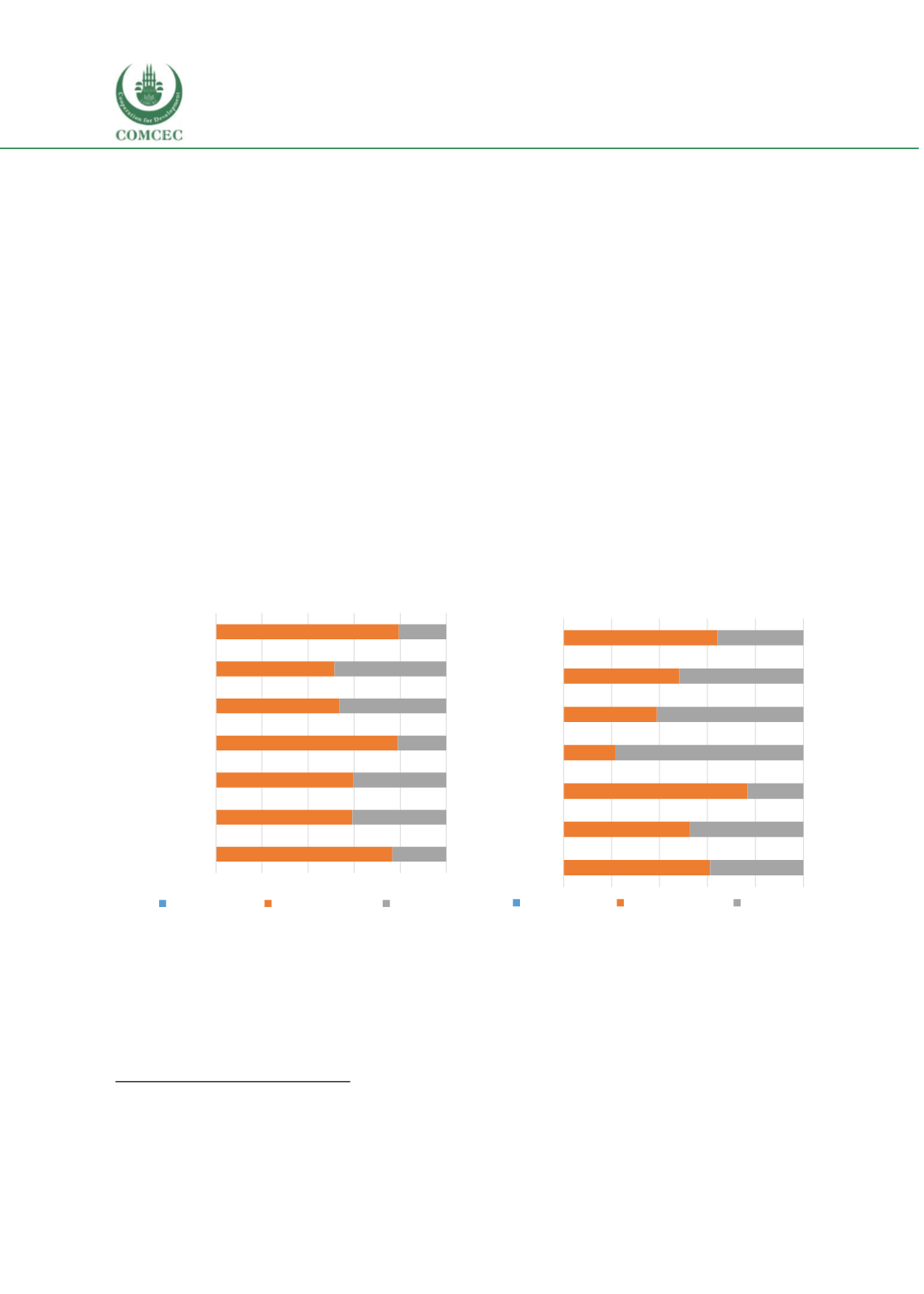

Education of Disadvantaged Children in OIC:
The Key to Escape from Poverty
84
Inefficient budgets:
With almost 40% of the education budget being spent on primary school
242
,
the low performance and high drop out rates through those grades are concerning. A World Bank
study points to the low overall efficiency of budget as one of the main challenges to access and
quality of education. Regional disparities are manifest in varying levels of efficient management
of budgets. Section 2.1 and 2.2 showed that GERs and attendances rates for 5-11 years old have
been increasing sluggishly, in spite of the continued high investment levels. This illustrates the
inability of the education system to transform all the resources mobilized into results and leads
to the high dropout rate notably in Grades 1 and 5. According to a recent survey, the “most
important reasons for dropping out of Grade I were parents' limited financial means (21%), lack
of Arabic as a learning language at school (19%), health problems (14%) and the need for children
to support their parents (14%).”
243
Design and incentives
: Different management of resources may lead to improved performance
of students, as mentioned above. However, the findings from the PASEC study show the
importance of designing the right incentives and the right ‘results’ when moving towards
performance-based budget management.
Figure 33 The distribution of students according to the academic level of the teacher
A.
Beginning of primary cycle
B.
End of primary cycle
Note: CONFEMEN (2014)
Figure 33 shows a larger share of teachers with university degrees allocated to end primary
grades. This could be due to school principals staffing their most qualified teachers at the grades
where an assessment will take place and in order to get higher test performance from students.
While it is very important to focus resources on improving test performances, this leaves many
242
UNICEF (2016) “Analyse des depenses publiques dans les secteurs sociaux au Senegal 2006-2013”
243
WB (2012) report
79,4
51,5
53,7
79
59,7
59,2
76,6
20,6
48,5
46,3
21
40,3
40,8
23,4
0
20 40 60 80 100
North
West
Center
Southeast
Southwest
National
International
primary school
secondary school
university
64,1
48,2
38,9
21,7
76,8
52,8
61,1
35,9
51,8
61,1
78,3
23,2
47,2
38,9
0
20
40
60
80 100
North
West
Center
Southeast
Southwest
National
International
primary school
secondary school
university
















